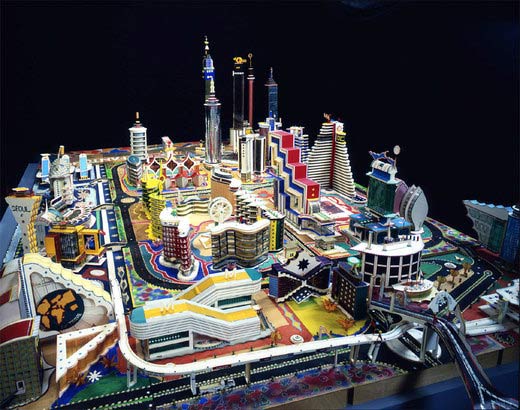Equatorial Guinea shares similar cultural aspects with other
countries that are nearby, so it’s not surprising that they would also share
similar arts. Mask-making is one of those arts that pan across much of Western
Africa. Each mask has a different
meaning, although most of the designs depict animals such as crocodiles and
lizards.
Art from the Fang tribe is probably some of the most iconic
art from this area. Their art
tends to be more abstract and conceptual in nature. They also made masks, which come in a variety of styles
(long necks, full figures, half figures), painted in a variety of earth tones. Some
of these masks are used in religious and funeral ceremonies; others are used as
part of rituals in secret societies; there are some that are for hunting; and some
for music and dancing.
Sculpture is also a popular medium among Equatoguinean
artists as well. One artist, Don
Leandro Mbomio Nsue, is probably the most famous artist from this country. Studying initially in the city of Bata,
he later moved to Spain to study further.
He was interested in the styles of Pablo Picasso, whom he later became
friends with. Picasso’s style and
individuality can be seen through Mbomio’s own work, and in fact, he was often
called “the black Picasso” by many artists throughout the world. Mbomio has been nominated and the
recipient of numerous awards and represented Equatorial Guinea through his art
and as an ambassador for peace through UNESCO.
And even though Spanish is the official language of the
country and most people in Equatorial Guinea can speak it and read it, their
canon of literature is scarce. The
Spanish and Portuguese were the first ones to write about this country, but it
was mostly in a travel logs, historical accounts, and often referred to the
people in a second-class sort of way.
The earliest accounts of literature by native Equatoguineans are
narrowed down to two novels written in the early part of the 20th
century. Published journals became
popular, as well as writing down local folklore for preservation.
 |
| Juan Balboa Boneke |
After independence there was a general silence. Unlike other African countries where
many anti-colonial works were being published, literature in Equatorial Guinea
remained unknown and unpublished. Even poetry struggled. It certainly had
something to do with the way the government was at the time. Censorship was deep.
Most of the literature that was being produced still seemed to appease the
colonial powers, rather than the independent ones. And once the heavy hand of
the government took a firm grip on the nation, many of the writers and artists
fled the country, heading to Madrid and other areas of Spain.
Some of the most notable names in literature are Raquel
Ilonbé (born in Equatorial Guinea, moved to Spain as a baby, returned as an
adult and is known for her collection of poems called Ceiba and for writing the first children’s book), Juan Balboa
Boneke (famous for his poetry, he tends to mix various words of the Bubi
language in with Spanish; he is also famous as an early political essayist), and
María Nsué Angüe (she was the first woman novelist, publishing Ekomo in 1985; telling the story of a
Bantu woman from the point-of-view of a man to show the patriarchal society of
postcolonial Africa).
While literature from this country is not large, it is
there; however, it's seemingly nonexistent in modern anthologies of Spanish
literature on a whole. And I wonder why this is. I’d hardly think that there
isn’t anything of caliber to include; perhaps it’s just not promoted in the
same fashion as other arts. In the
early 1980s, the Center for Hispanic-Guinea Culture was created, designed to
promote the cultural arts and included its own magazine and a publishing
company. Its goal is to highlight
and showcase talented Equatoguinean writers. It’s too bad that no one funnels more money into this
institute with connections to the local schools to promote young writers to be
heard and published on a global scale.
Up next: music and dance

/2.jpg)






